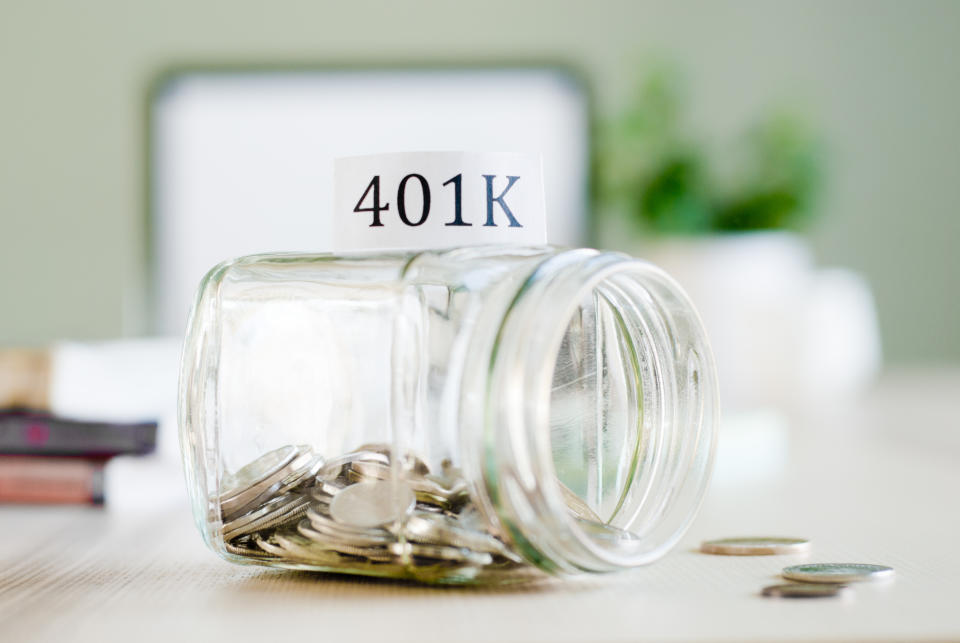How Does Your 401(k) Compare to The Average?
If you're fortunate enough to have access to a 401(k) through your employer, take full advantage of it. Only around 53% of workers over the age of 22 have access to a defined contribution plan, such as a 401(k), according to a Pew survey. Of those who have access to this type of plan, however, only 38% actually participate.
You're able to contribute up to $19,000 per year to your 401(k), according to the IRS's 2019 contribution limit guidelines, making it one of the most powerful tools in your retirement planning toolbox. In addition, if your employer offers any type of matching contributions, you could be receiving what's essentially free money simply by stashing cash in your retirement account.
That said, not all 401(k)s are created equal, and some offer better perks than others. While you may not have the ability to switch to a new 401(k) -- at least without changing jobs -- it's sometimes helpful to see how your plan stacks up. If you're lucky enough to have access to a 401(k) that's better than average in several categories, make the most of it by saving as much as you can.

Image source: Getty Images
Contribution rates
Your 401(k) contribution rate is the percentage of your salary that you're stashing away -- which includes both your own contributions as well as any additional contributions from your employer.
A full 95% of organizations offer some type of employer contribution -- such as matching contributions, profit sharing options, or an employee stock ownership plan (ESOP) -- according to a study from Vanguard. Also, of those employers that offer matching contributions, the average match is around 4.3% of the employee's wages.
The average employee participating in a 401(k) contributes just under 7% of their salary, according to Vanguard, and the average total contribution rate (including any employer contributions) is around 10.6%.
Account balances
According to Vanguard, the average 401(k) account balance is $92,148. But that number is skewed by power savers who have hundreds of thousands of dollars stashed away, so a more accurate representation of how much workers have saved is the median amount -- which is just $22,217.
These numbers account for workers across all ages, though, so the statistics alone don't paint the entire picture -- someone in their 20s with $90,000 saved is in far better shape than someone in their 60s with that amount in their retirement fund. Here's what the median 401(k) balance looks like by age:
Age | Median 401(k) Balance |
|---|---|
Under 25 | $1,427 |
25 to 34 | $8,126 |
35 to 44 | $22,123 |
45 to 54 | $40,243 |
55 to 65 | $61,739 |
65 and up | $58,035 |
Source: Vanguard
Keep in mind, too, that even if your 401(k) balance is in line with or even higher than the average, that doesn't necessarily mean you're on track to retire comfortably. You'll likely need hundreds of thousands of dollars in savings to last the rest of your life, so it's important to calculate your retirement number to personalize your retirement plan.
Fees
Everyone pays fees when investing in a retirement account, but not everyone realizes how much they're paying (or that they're paying anything at all). Thirty-seven percent of Americans mistakenly believe they don't pay any 401(k) fees, a survey from TD Ameritrade found, and another 36% either don't know whether they're paying fees or aren't sure how to determine what they're paying.
The average 401(k) charges fees of around 1% of total assets under management, according to a study from the Center for American Progress. So if you have $100,000 in your 401(k), that means you'd be paying around $1,000 per year in fees.
There are different types of fees you may be paying, but the most important figure to look for is the expense ratio -- which is the percentage of your savings that goes toward the administrative and general management costs involved in running your account. To find your expense ratio, you can either check your account statements or talk to your plan administrator.
If you discover that you're paying more than average, you can ask your plan administrator if you can shift your investments to different funds with lower fees. That's not always a possibility, though, so in that case, you may choose to save enough in your 401(k) to earn any employer matching contributions, then put the rest of your cash in an IRA with lower fees.
Availability of additional resources
Roughly 61% of companies offer one-on-one financial counseling for their employees, a survey from financial services organization Alight Solutions found, and 60% offer online tools and guidance to help workers make the most informed investing decisions.
You may have access to these types of resources without even realizing it, so if you're unsure, ask your plan administrator or check out your plan's website to see what's available to you. Approximately 60% of Americans investing in 401(k)s and IRAs say they have little to no confidence in managing their own investments, a report from the Federal Reserve Bank found. So if you're struggling to make sense of your money and need help, it's worthwhile to see whether your 401(k) plan offers any financial advice.
Your 401(k) is a powerful tool, but only if you make the most of it. Taking a proactive approach and learning as much as you can about your plan and how it compares to other retirement accounts can help you make more informed investing decisions, which will in turn help you save more for the future.
More From The Motley Fool
Katie Brockman has no position in any of the stocks mentioned. The Motley Fool has no position in any of the stocks mentioned. The Motley Fool has a disclosure policy.
